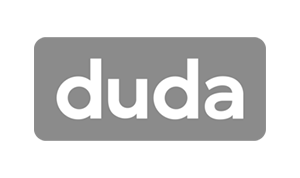Crown Street, Wollongong, 2500
Answer Engine Optimisation (AEO): The New Frontier of SEO for Australian Small Businesses
How we look for answers online is undergoing a seismic shift, and just like explorers once charted unknown territories, businesses today are facing a new frontier in digital marketing.
Instead of scrolling through endless blue links, people now ask AI assistants and search engines for instant answers. Siri might tell you the closest café, or ChatGPT might summarise the best marketing strategies, all without sending you to a website. This shift is driving a new frontier in digital marketing called Answer Engine Optimisation (AEO).
For small businesses in Australia, AEO isn’t a buzzword. It’s a necessity. We know this first-hand, because we’ve had to adapt our own SEO strategies as more than half of Google searches now end without a click, with relevant answers appearing directly on the results page. Add to that the surge in voice search, with 58% of consumers using it to find local businesses, and the risk couldn’t be clearer. If your content isn’t the answer being read out or displayed, you’re effectively invisible.
On the flip side, there’s a powerful opportunity: AEO positions your content to be the chosen response on Google snippets, voice assistants, and AI chatbots. In this guide, we’ll break down what AEO is, how it differs from SEO, where Generative Engine Optimisation (GEO) fits in, and what you can do to stay visible in a search world that’s powered by AI and instant results.
What Is Answer Engine Optimization (AEO)?
Answer Engine Optimisation (AEO) is the practice of structuring content so search engines and AI platforms can provide direct answers to user queries that reflect real user intent, rather than just listing your website. In effect, your content becomes the answer that “answer engines” deliver, whether through Google’s featured snippets, voice assistants like Siri, Alexa, and Google Assistant or AI tools such as ChatGPT, Bing Copilot, and Google Gemini.
Instead of showing a list of links, these platforms often provide a single curated response. AEO helps your brand become that response. For example, your content might be quoted by ChatGPT or appear in Google’s AI overview. The aim is visibility in AI-generated and voice results, not only in traditional search rankings.
AEO doesn’t replace SEO. Rather, it builds on it. You still need strong SEO fundamentals, like keyword research, quality content, and backlinks, to lay the groundwork so your answers have the authority to be featured, cited, or read aloud. What AEO adds is formatting and clarity so that answers can be extracted instantly. In short, AEO positions your content as the authoritative answer to specific user questions across multiple platforms.
How Is Answer Engine Optimization Different from SEO?

At first glance, Answer Engine Optimisation (AEO) sounds similar to SEO, since both aim to get content noticed. The difference lies in their focus, format, and success measures.
Purpose
SEO improves website rankings in search engines and drives clicks. AEO focuses on giving the best direct answer to a query, even if the user never visits your site. Success means your content is selected by answer engines, featured in a snippet, read aloud by a voice assistant, or quoted by an AI.
Query Types
SEO often targets short, keyword-based searches such as “website design Wollongong” or “plumber Sydney”. AEO addresses conversational and long-tail search queries like “Where can I find an emergency plumber near me in Sydney tonight?”. Voice and AI searches use natural language, so AEO content needs to mirror everyday questions.
Content Format
SEO may rely on long-form content where answers are buried in paragraphs. Answer Engine Optimisation works best with clear Q&A formatting: ask the question directly, then give a concise answer in 2–3 sentences before expanding further. This structure makes it easy for search engines and AI tools to extract responses.
Technical Optimisation
Both SEO and AEO rely on core practices like crawlability, mobile-friendly design, and fast loading. Answer Engine Optimisation adds structured data markup (Schema.org such as FAQPage or HowTo) to signal explicit Q&A content, increasing the chance of being used in knowledge panels, snippets, or voice replies.
Metrics of Success
SEO measures rankings, organic search traffic, click-through rates, and conversions. AEO measures visibility in answer platforms, such as featured snippets captured, brand mentions by AI assistants, or voice search results. Success may be hearing, “I found you through Siri,” even without clicks.
In Practice
SEO draws people to your website, while AEO takes your information to people. Both overlap, but AEO requires a sharper focus on answering questions directly, structuring for machines, and adapting to zero-click searches. With nearly 60% of Google searches ending without a click, being the chosen answer matters more than just ranking.
Answer Engine Optimisation also broadens its reach beyond Google or Bing. It covers voice responses on smart speakers, in-car systems, and conversational AI, where user queries are answered instantly. For instance, if someone asks, “What’s a good budget hotel in Brisbane?”, an AEO-optimised site could have its answer quoted by the AI, something traditional SEO alone would not be able to achieve.
Which Is the Best Answer Engine Optimization for AI Tools?

With AI-driven answer engines like ChatGPT, Siri, and Google’s AI results reshaping search, there’s no single “hack” for AEO. The best approach is a mix of smart research, strong content, and technical optimisation so AI can easily use your direct answers.
1. Start with Question Research
AEO begins with knowing what your target audience asks. Tools like AnswerThePublic and Google’s People Also Ask show real questions, giving you a roadmap for content. For example, a Melbourne florist might uncover user queries like “What’s the best season for wedding flowers in Australia?”. SEO platforms like Semrush and SurferSEO go further, analysing competitors and suggesting related subtopics.
2. Optimise with AI-Powered Tools
Once you know the questions, tools like SurferSEO or Frase help you structure content for quick, digestible answers. Some even track AI visibility, showing how often your brand appears in AI-generated responses across platforms like Bing Chat or Google’s AI.
3. Use Structured Data and Snippet Optimisation
Schema markup (FAQ, HowTo, LocalBusiness) makes your content machine-friendly. Combine this with concise, snippet-ready answers (40–60 words) at the top of your content, formatted with headings, bullet points, or tables. Google and voice assistants often pull directly from these snippets, and adding structured data strengthens the chances your content will be surfaced as the preferred answer in search engines and answer engines.
4. Build Authority and Trust (E-E-A-T)
AI tools favour credible content backed by experts. E-E-A-T stands for Experience, Expertise, Authoritativeness, and Trustworthiness, which are the qualities traditional search engines and AI look for when deciding which content to surface. Cite reliable sources, highlight professional expertise, and earn brand mentions across the web. These authority signals boost SEO while improving the odds of your content being quoted by AI.
In short: the best AEO strategy is part research, part technical SEO, and part authority building. By answering real user queries clearly, formatting for machines with structured data, and showcasing your expertise, you position your brand in front of both search engines and answer engines, putting it in the spotlight where AI tools are handing out direct answers.
How to Optimize for AEO (Step-by-Step)
Answer Engine Optimization (AEO) isn’t about guesswork; it’s also about structuring your content so AI tools and search engines want to use it. Here’s a practical roadmap that small businesses in Australia can easily follow:
1. Think in Questions
Start with what your customers actually ask, not just keywords. A café in Sydney might face “Where’s the best brunch in the CBD?”, while an accountant might get “How do I lodge taxes online in Australia?”. Use Google’s People Also Ask, Autocomplete, AnswerThePublic, or your own FAQs to build a question list.
2. Structure Content as Q&A
Use questions as headings and give a clear 40–60 word answer upfront, followed by supporting detail. This snippet-first style makes it easy for AI and Google to grab your response over competitors whose relevant answers are buried deep in long paragraphs.
3. Target Snippets & Voice Search
Format for “position zero” with short sentences, lists, tables, and clear headings. Mirror natural voice phrasing (“What’s the weather in Brisbane today?”). Keep your Google Business Profile up to date, since voice assistants often use local listings.
4. Implement Schema Markup
A schema markup is your handshake with search engines. By adding structured data such as FAQPage, HowTo, Article, or LocalBusiness markup, you signal machine-readable answers that align with real search queries. This increases your chances of appearing in rich results and voice-ready responses.
5. Build Authority (E-E-A-T)
AI engines favour expertise and trust. Experience, Expertise, Authoritativeness, and Trustworthiness (E-E-A-T) is the standard they use to judge credibility. Back claims with reputable sources, highlight credentials, and showcase reviews or awards. A clear author bio or business profile adds credibility.
6. Stay Technically Sound
Page speed, mobile-friendliness, clean structure, and crawlability all matter. Use proper headings, sitemaps, and schema. Machine-readable content is usually the clearest for humans, too. Avoid jargon and long-winded text.
7. Monitor & Adjust
Use the Google Search Console dashboard to monitor performance trends, then test key user queries in ChatGPT, Bing, or Gemini to see if your brand appears. For deeper insights, tools like Surfer or Semrush can track featured snippets and AI visibility. Keep adjusting and updating your content as algorithms evolve.
Bottom line: Answer Engine Optimisation is about answering real questions clearly, proving authority, and making content machine-friendly. Nail those steps, and your business is far more likely to be the voice, snippet, or AI answer customers hear first.
What is Generative Engine Optimization (GEO)?
As generative AI tools like ChatGPT, Bard, and Bing Copilot reshape search, a new concept has emerged: Generative Engine Optimisation (GEO). It’s often mentioned alongside Answer Engine Optimisation (AEO), but think of GEO as the next step. It’s focused specifically on how AI systems use your content when producing long-form answers.
AEO vs GEO
- AEO is about short, factual answers, like featured snippets or voice results.
- GEO is about being part of broader, narrative-style responses from AI, where multiple sources are blended. The goal is for AI to reference or even cite your content when delivering detailed explanations.
For example:
- AEO might win you the snippet for “What’s the population of Sydney?”.
- GEO gets your brand included when someone asks, “I’m moving to Sydney, what should I know?”, and the AI generates a few paragraphs quoting your stats or insights.
Why GEO Matters in Today's AI Driven Search Engines
GEO is essentially “AI SEO” for the ChatGPT era. It ensures your brand is visible not only in quick answers but also in the AI-generated content people increasingly rely on. Strategies include:
- Publishing original research and comprehensive guides that AI recognises as authoritative.
- Using clear structure (headings, lists, data tables) that models can easily parse.
- Tracking AI outputs to see if your brand is being cited.
The Big Picture
Generative AI is now a platform in its own right, much like Google was a decade ago. As more people turn to AI assistants for detailed advice, GEO helps ensure your content is part of that ecosystem. In short, AEO gets you into the answer box, while GEO gets you into the story.
GEO vs AEO vs SEO: How Do They Compare?

With so many acronyms flying around, it’s easy to get lost in the jargon. Here’s a clear breakdown of how SEO, AEO, and GEO fit together.
SEO (Search Engine Optimization)
The foundation of digital visibility. SEO is about ranking on search engine results pages by optimising keywords, site quality, backlinks, and technical health. The goal is to drive clicks to your website.
AEO (Answer Engine Optimization)
An evolution of SEO, AEO focuses on answering real user questions directly. It’s less about rankings and more about visibility in snippets, knowledge panels, and voice assistant results. Think of it as structuring your content in Q&A form, using clear headings and structured data so Google, Siri, or Alexa can pick it up instantly.
GEO (Generative Engine Optimization)
The newest layer, GEO targets AI-driven platforms like ChatGPT and Bing Copilot. It’s about getting your content woven into AI-generated responses and long-form narratives. GEO emphasises authority, depth, and trust so that when AI “tells the story,” your brand is included or cited.
The Customer Journey in Action
- GEO/AEO: A customer first hears your business mentioned by an AI assistant.
- SEO: They then Google your name to check you out, where strong SEO makes sure you rank.
- GEO/AEO: Later, when comparing products, an AI tool pulls in your brand again.
In Plain Terms
- Search Engine Optimization (SEO) gets you on the results page.
- Answer Engine Optimization (AEO) gets you into the answer box.
- Generative Engine Optimization (GEO) gets you into the AI’s narrative.
All three overlap, and none replace the other. For small businesses in Australia, where smart speaker adoption and voice search are booming, being able to cover all fronts is a competitive advantage. Search engine optimization keeps your digital storefront visible in search engines, answer engine optimization puts you in the spotlight of search features, and generative engine optimization ensures your expertise is part of the AI-powered future.
Takeaway
The new reality is this: search engines are no longer just about rankings, it is about answers. For Australian small businesses, this shift is both a risk and a reward. The risk? If Google or AI delivers the answer before anyone clicks, your site may never get the visit. The reward? If your content is the answer, your brand wins visibility, authority, and trust without needing the click.
Answer Engine Optimisation is the key to staying in the conversation. Whether it’s ChatGPT quoting your blog, Siri reading your hours, or Google Search showcasing your how-to guide, AEO helps your business be the name customers hear first.
But remember: SEO, AEO, and GEO aren’t separate silos. You need all three to capture attention at every stage of the customer journey:
- SEO as your foundation: strong content, healthy site, local visibility.
- AEO to capture snippets, voice queries, and direct answers.
- GEO to ensure your brand appears in AI-generated narratives and future training data.
Your next move? Audit your content. Identify customer questions you should be answering, build or update FAQ pages, add schema markup, and keep your Google Business Profile up to date. Small steps like these can deliver big wins in voice search and AI responses.
At the heart of it all is one rule: serve the user. Clear, accurate, useful answers will always win, whether delivered by Google, Siri, or ChatGPT. By embracing AEO and GEO as early as now, you’re not only improving current visibility but future-proofing your business in an AI-driven search world.
Australian businesses have a unique edge: you know your customers and their language better than anyone. Start answering their questions today. And soon, don’t be surprised when Alexa, Google, or ChatGPT starts recommending you.
Ready to launch an AI-ready website? Love My Online Marketing builds stunning websites with the right foundation for both traditional SEO and and emerging AI search. This means your site won’t just perform well in Google, it will also have the structure needed to appear in AI-powered search results from tools like ChatGPT, Bing Copilot, and Google’s AI Overviews.
Our AEO and GEO service is available exclusively for websites we build and host on our platform, so whether you’re starting fresh or moving your site to us, we can help future-proof your business. Contact us today to get started.

Love My Online Marketing has 10+ Years of working alongside businesses and helping them grow. Discuss your options for online success from website Design and Development through to Google Marketing.
Do you want more traffic and business leads?
Love My Online Marketing is determined to make a business grow. Our only question is, will it be yours?






























